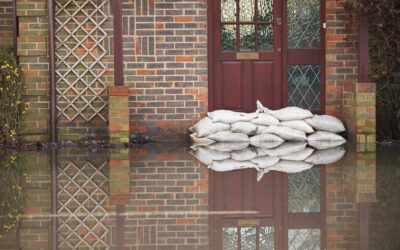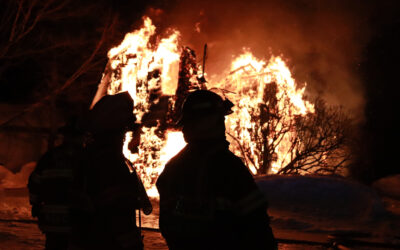As an early and seemingly relentless wildfire season endangers people and property across the country, and communities rebuild in the wake of devastating spring floods in Quebec and B.C., Canadians are confronting the harsh realities of how climate change is reshaping our day to day lives.
Not only is climate change making these and other weather-related disasters more frequent and severe across Canada—it’s also making life less affordable. This is as true in downtown Toronto as it is for those living in disaster-prone areas. Climate-related damages increase the average household’s cost of living by $700 each year, in the form of higher grocery bills due to supply-chain disruptions, to rising home insurance premiums and tax hikes to pay for disaster recovery and infrastructure repairs.
When extreme weather wreaks havoc, it can feel impossible to consider the years ahead, or even the days ahead. And while keeping people safe and supported is priority number one in the immediate aftermath of a disaster, longer-term policy, planning and investment is crucial to save lives and reduce the costs of future climate destruction.
Climate change is costing Canadians more than ever
Over the past five decades, the costs of weather-related disasters like floods, storms, and wildfires in Canada have risen from tens of millions of dollars to billions of dollars annually. Between 2010 and 2019, insured losses for catastrophic weather events totalled over $18 billion, and the number of catastrophic events was over three times higher than in the 1980s. Twelve of the 15 weather-related disasters that have cost Canadian governments the most overall in disaster financial assistance have occurred since 2010, with three occurring in B.C. in 2021.
Governments and communities are already grappling with the challenges, and price tags, that come with rebuilding after a major disaster strikes. Repairing from severe damage and building more resilient infrastructure can take decades, and the costs of rebuilding after extreme weather events like the 2021 B.C. floods are often in the billions.
If we fail to adapt proactively when possible, climate change will just keep making life in Canada more costly—and more dangerous.
Helping communities adapt pays off
Governments across Canada need to dramatically scale up public investment in adaptation, before disaster strikes. This is especially true for equity-deserving and marginalized communities that often face greater risk from extreme weather as a result of chronic under-funding for services and support, inadequate infrastructure and a legacy of discriminatory policies.
Ensuring communities have the resources and capacity to keep people and infrastructure safe during natural disasters and building critical infrastructure like roads and electricity systems to withstand extreme weather can save lives and dramatically cut costs. For example, using climate-resilient materials when maintaining and replacing roads can reduce future heat and rainfall-related damage costs by up to 98 per cent. This action alone can result in up to $5 billion in savings nationally over the next few decades, but it requires decision makers to invest strategically up-front.
Canada is well behind our peer nations in identifying and acting on adaptation as a national priority. Even though every dollar invested in adaptation generates $13-$15 in economic returns, funding for climate change adaptation has consistently lagged behind other climate funding from both federal and provincial and territorial governments.
Canada’s National Adaptation Strategy, released last fall, was an important step towards building safer and more resilient communities. But the strategy is just the beginning—governments must now follow-through with the investments needed to make it a reality.
Getting ahead of future damages requires tackling adaptation with an urgency that’s typically only seen in the immediate wake of a disaster. With lives and livelihoods at stake, we can’t afford to wait.







